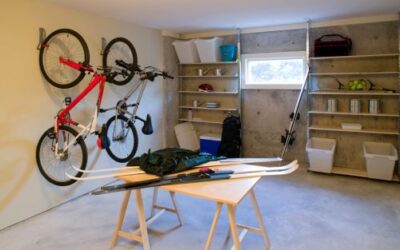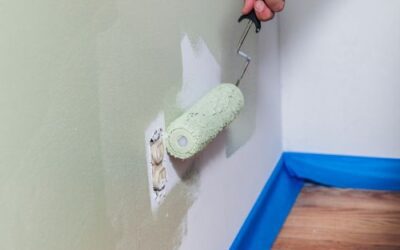Painting a tall facade can be a challenging task due to the height and difficulty in accessing certain areas. However, with the right knowledge and tools, it is possible to achieve a professional finish. That said, painting facades at heights also carries risks that only experts can manage properly. So if you prefer to leave it in the hands of professionals, you can always turn to our façade painting service, where we ensure that every project is executed safely and efficiently.
Step 1: Inspect the surface before you start
The first step for any painting project is to assess the condition of the facade. Cracks, dampness or mould must be dealt with before paint is applied. If you ignore these problems, the paint could peel or deteriorate quickly. If you notice mould or damp stains, consider applying a specialist solution to eradicate these problems before painting.
On more complicated projects or those with visible damage, having the expertise of professionals such as Bartolomé Bas Pintores can be essential to ensure that underlying problems are properly addressed.
Contact our professionals
Step 2: Choose the right equipment for working at height
One of the most critical aspects when painting high facades is access to the upper parts. If the structure is very high, it is advisable to use scaffolding or lifting platforms to ensure the painter’s stability and safety.
- Extendable ladders: Useful for medium heights, provided they are well secured to avoid accidents.
- Scaffolding: The safest option for considerable heights, as they offer a stable platform to move freely while painting.
- Roller extensions: These can be useful for reaching higher parts without having to continuously move the scaffold or ladder.
Step 3: Surface preparation
Proper preparation is essential to ensure that the paint adheres properly to the facade and lasts for many years. This includes thorough cleaning of the surface and repair of any visible damage.
- Cleaning the facade: Use a high-pressure hose or a mixture of water and detergent to remove dust, dirt and paint residues. If mould is present, it is crucial to remove it completely with specialised products.
- Repairs: Caulk cracks and use mortar in damaged areas to level the surface. This will ensure that new paint is applied evenly.
- Priming: More porous facades or facades with repaired areas should be given a coat of primer to improve paint adhesion and ensure the finish is durable.
Step 4: Selecting the paint
The paint you choose is crucial to the longevity of the job and to ensure that the façade can withstand the elements. Exterior paints are designed to resist wear and tear caused by sunlight, rain and wind.
- Acrylic paints: These are most commonly used for exteriors due to their water and UV resistance. They offer excellent coverage and weather protection.
- Elastomeric paints: These are ideal if the façade is prone to cracking or if it is located in an area with significant temperature changes. These paints are flexible and expand with the natural movement of the building.
Step 5: Paint application
The correct application of paint is key to achieving a uniform and durable finish. To achieve this, it is important to follow certain basic principles:
- Thin coats: It is better to apply several thin coats of paint rather than one thick coat. This will prevent the paint from flaking and ensure even coverage.
- From top to bottom: Always start painting from the top of the facade and work your way down. This prevents paint drips from ruining already painted areas.
- Use the right tools: Brushes are ideal for detailed or small areas, while rollers are perfect for covering large surfaces quickly.
Step 6: Security
Painting high facades involves risks, so proper safety measures are essential. Make sure you use proper safety equipment such as harnesses, goggles and gloves. Also, never work at heights without the help of another person and make sure that ladders or scaffolding are securely fixed.
Step 7: Aftercare
Once the paint job is completed, it is important to perform regular maintenance of the façade. Periodically inspect for cracks or areas where the paint may have deteriorated. Timely touch-ups can extend the life of the paint and keep the facade in perfect condition.
Other publications that may interest you
Paint suitable for basements and poorly ventilated rooms
Basements, storerooms or garages have unique conditions: poor ventilation, high humidity and increased risk of mould or condensation. Using conventional paint in these spaces is a common mistake that leads to ephemeral finishes and health problems due to fungi or...
How often should a house be painted depending on its use?
The frequency with which you should paint a house is not always the same. It depends on several factors: the use given to each room, the quality of the paint used, exposure to light or humidity, and even the colour. In this guide we explain how often you should renew...
Tips for painting a room without staining doors and sockets
Painting a room may seem like a simple task, but without the right preparation it's easy to end up with splashes on doors, sockets, switches and even skirting boards. If you want a clean, professional finish, we've got the best tips to avoid stains and save you...




